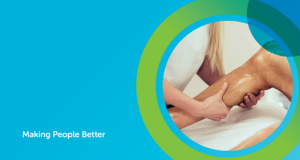Share
Author: Katie O’ Neill, Physiotherapist at Vita Health Group
What is Pilates?
Pilates is a form of exercise which aims to strengthening the whole body with a particular focus on the deep core muscles as a foundation to build from. It can be carried out on a mat using minimal equipment such as a resistance band or a gym ball, or using specialist equipment such as the Reformer, Cadillac and Wunda chair. This specialist equipment can provide a basis to further challenge or facilitate movements depending in your goals. It was created by Joseph Pilates in the 1920s and was inspired by the work he did when rehabilitating injured war veterans in World War 1.

Who is Pilates suitable for?
Pilates can be applied as an exercise method in a range of settings such as orthopaedics, women’s health, sports, neurological and paediatric settings. It can offer something to people of all ages and levels of fitness from sedentary works to elite athletes. With regular practice it can improve mobility, strength, balance and assist with managing pain and stress. It can be progressed or regressed based on your own body’s abilities and needs. If you have any health conditions, injuries that you are recovering from, or questions regarding it’s suitability for yourself, seek advise from a GP or health care professional before commencing.
Can Pilates help with lower back pain?
We know from the current research evidence on the treatment of lower back pain, that exercise therapy is recommended to reduce and manage the symptoms and improve quality of life. Although no particular type of exercises has been proven to be the most effective type of exercise for back pain, there is evidence that Pilates has a role to play in reducing pain and improving physical and psychological perception of health in individuals who follow a regular practice. As it generally a low impact form of exercise, it is generally tolerated well and can be progressed from gentle slow controlled movements to more functional and challenging positions as your injury improves.
What is the difference between yoga and Pilates?
While benefits such as improved strength, mobility, flexibility and balance can be reaped from both exercise forms, the methods and theory behind these forms of exercise can be different. Pilates is generally performed as a flow through various sequences of movement, while yoga can involve holding static poses and positions. There can be many variations in the structure of the classes depending on the teachers preference and style of teaching, however there will generally be a stronger focus on achieving core muscle control in a Pilates class rather a yoga class.
Related News
Vita is an award-winning, CQC registered healthcare provider














